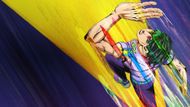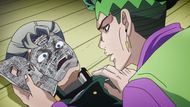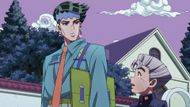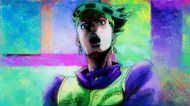In JoJo’s Bizarre Adventure, there is one character that the creator himself is fascinated with, and that is none other than Rohan Kishibe. His prominence across multiple media has sparked a burning question among fans: Is Rohan Kishibe Hirohiko Araki’s self-insert?
In various interviews and writings, Araki has acknowledged that Rohan of JoJo’s Bizarre Adventure is “based on himself,” but has also clarified that they are not the same person. He is so fond of Rohan that he once joked he would play him in a movie, though he stressed that they differ personality-wise.
In a sense, Rohan is less a self-insert and more an archetype.

Originally, Araki wrote the first story (At the Confessional) with a nameless narrator. However, he felt it lacked flavor. When he replaced the narrator with Rohan, it clicked. Rohan, as a character, could carry these strange, moralistic, and often eerie tales, because he is the type to seek out mystery, to push boundaries. He is also emotionally distant enough to function as a narrator without overpowering the story.
That is why Rohan’s stories have worked so well across different media. Whether it is the OVA (Millionaire Village, The Run) or the live-action TV drama, the stories are less about Rohan changing or growing, and more about witnessing strange phenomena through his eyes. Rohan is not a traditional protagonist. He is a lens.
Heaven’s Door in JoJo’s Bizarre Adventure: Artistic wish fulfillment?

Rohan’s Stand, Heaven’s Door, is one of the most symbolic in the series. It allows him to turn people into books and read their life stories, then write commands directly into them. In essence, Rohan gains complete control over knowledge and truth.
It is the ultimate tool for someone obsessed with reality. For a mangaka, it is a dream power - instant research, no interviews, no guesswork. You could say Heaven’s Door in JoJo’s Bizarre Adventure is Araki’s own fantasy about perfect worldbuilding.
When asked in interviews which Stand he’d want in real life, Araki has chosen Heaven’s Door. Not because it is powerful, but because it allows him to “know what people are really thinking.” For a creator of emotionally resonant stories, that is a powerful sentiment. Understanding humanity lies at the core of compelling storytelling.
Rohan vs. Araki: Diverging philosophies

Araki has admitted that he often doesn’t plan the smaller plot points in JoJo. In Jojonium Volume 13, he reflects on killing off Avdol in JoJo’s Bizarre Adventure: Stardust Crusaders, only to bring him back shortly after. Araki is spontaneous. He writes in the moment.
Moreover, in JoJo’s Bizarre Adventure, that spontaneity shows. Plot details change, character backstories evolve, and even Stand powers shift over time. Araki doesn’t treat continuity as sacred. For him, the experience is more important than the structure. The reader’s engagement matters more than narrative realism.
This is where Rohan and Araki differ most. Rohan believes in structure. He wants reality to fuel fiction. Araki wants fiction to surprise, delight, and sometimes even contradict itself if that serves the story better. Rohan is rigid in his realism. Araki is fluid in his surrealism.
Growth and humanity: Rohan’s emotional side

In JoJo’s Bizarre Adventure: Diamond is Unbreakable, he helps uncover the identity of serial killer Yoshikage Kira after recalling his emotional connection to Remi, his former babysitter.
Perhaps, tellingly, Rohan protects his editor, Izumi, during Millionaire Village, even risking his life to save her. Araki has called Izumi a kind of “antagonist” to Rohan not in a villainous way, but because she represents constraints, deadlines, and editorial oversight.
She challenges Rohan’s creative freedom. Yet, he cares for her. These moments give Rohan dimension. He is not just an artist obsessed with reality. He is someone who, over time, has come to respect the people within that reality.
Final verdict
Rohan shares many surface-level similarities with Araki. They are both manga artists. They are obsessive researchers. They value details, structure, and uniqueness. Rohan even has the Stand in JoJo’s Bizarre Adventure that Araki himself would want.
And, yes, Araki has admitted that Rohan is somewhat based on him. Yet, in the end, Rohan isn’t Araki but someone Araki understands deeply. That, more than anything, is what makes him JoJo’s most strangely enduring character.
